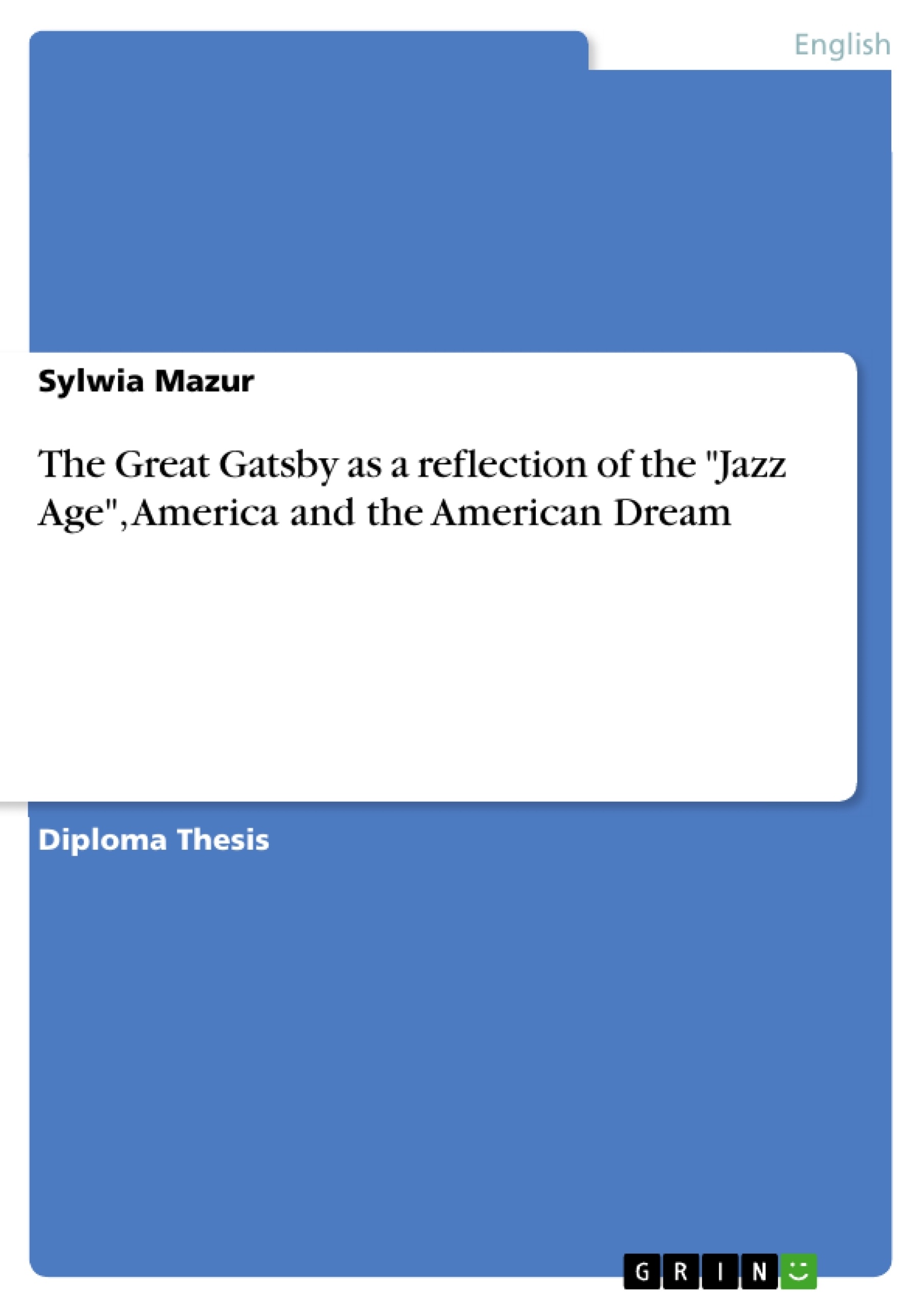One of the most outstanding American novels that explore the ethos of the American dream is "The Great Gatsby", a symbolic presentation of America of 1920s, the era of unprecedented prosperity as well as corruption. Each of the characters of “The Great Gatsby” has his/her own concept of the “America Dream” and the goals they want to achieve.
The first chapter of the thesis deals with socio-political situation in the U.S. after the WW1. It will analyze the most vital issues for America of that era such as economic prosperity, prohibition, immigration as well as social changes related to the position of women (flappers) and the concept of success (self-made man).
Chapter Two analyzes the main features of the American “Roaring 20s” such as materialistic attitude towards life, striving to attain high social status, prohibition as well as social phenomena “flappers” and “self made man“ in the context of the events and the characters of The Great Gatsby. Its assumption is to reflect the 1920s through the standpoints of its characters as well as economic and social background of the fiction.
Table of Contents
- CHAPTER I
- The Ethos of \"The American Dream” in The Great Gatsby
- Introduction
- 31.1.The Roaring Twenties.
- The Ethos of \"The American Dream” in The Great Gatsby
- Chapter Two
- American Dream perceived by the characters of The Great Gatsby.
- CHAPTER THREE
- Introduction
- 3.1. Money in The Great Gatsby
- 3.2. Consumerism in The Great Gatsby
- 3.3. Social Stratification in The Great Gatsby.
- 3.4. Prohibition in the Great Gatsby.
- 3.5. The Flappers in The Great Gatsby.
- 3.6 Jazz in the Great Gatsby
Objectives and Key Themes
This thesis examines the concept of the American Dream in F. Scott Fitzgerald's "The Great Gatsby", analyzing the socio-political situation of the 1920s and how it shaped the characters' perspectives on success and fulfillment. The work aims to explore the impact of the Roaring Twenties on the American Dream, focusing on both its positive aspects and the darker side of prosperity.
- The impact of the "Roaring Twenties" on the American Dream
- The influence of economic prosperity and social changes on the characters' desires and aspirations
- The portrayal of social stratification and the pursuit of wealth and status
- The role of materialism and consumerism in shaping the characters' perceptions of success
- The contrasting perspectives on the American Dream held by the characters in the novel
Chapter Summaries
Chapter I provides an overview of the socio-political context of the 1920s in America, focusing on the era's economic prosperity, social changes, and the concept of the American Dream. It explores the impact of technological advancements, immigration, and the "flapper" movement on the American identity. The chapter also examines the influence of Prohibition and the rise of Jazz culture on the social fabric of the time.
Chapter Two delves into the characters' individual perceptions of the American Dream in "The Great Gatsby". It examines the influence of the Roaring Twenties' materialistic culture on the characters' values and aspirations. The chapter also explores the complexities of social class and the pursuit of status in the context of the novel.
Keywords
The Great Gatsby, American Dream, Roaring Twenties, economic prosperity, social change, consumerism, materialism, social stratification, flappers, prohibition, Jazz Age.
- Quote paper
- MA Sylwia Mazur (Author), 2016, The Great Gatsby as a reflection of the "Jazz Age", America and the American Dream, Munich, GRIN Verlag, https://www.grin.com/document/370616




